Car of the Week: One of Ferrari’s Greatest Analog Supercars Is Heading to Auction
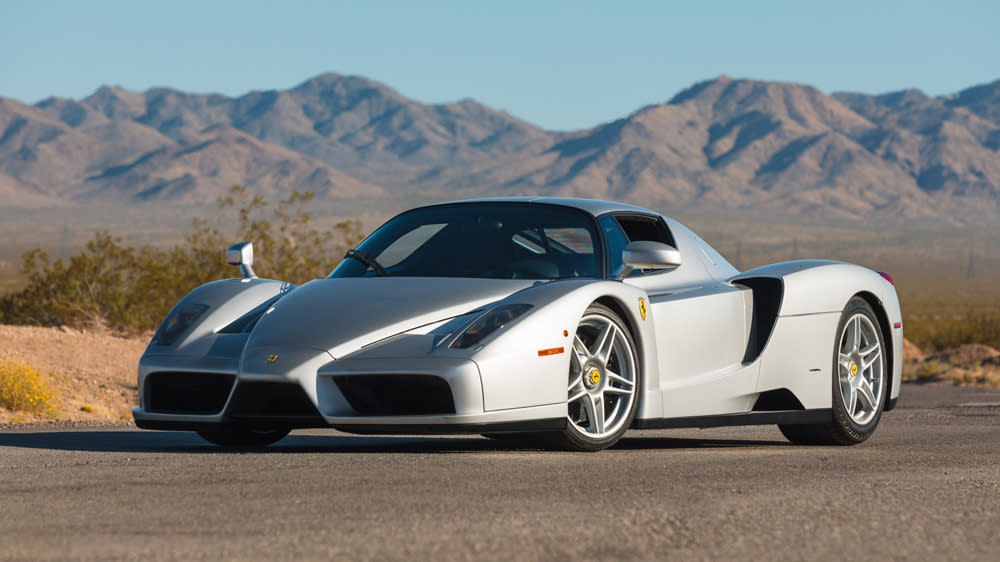
Collector car auctions don’t get bigger than Mecum’s annual flagship sale at Osceola Heritage Park in Kissimmee, Fla. This year’s edition will feature about 4,000 vehicles to be auctioned from January 4 through 15. One main attraction rolling—or roaring—across the block on Saturday, January 14, is a rare, 2003 Ferrari Enzo.
Often regarded as the last in a quartet of analog supercars from the Prancing Horse, its predecessors include the 288 GTO, F40 and F50. The Enzo’s successor was the LaFerrari, whose motive power combined an engine and an electric motor, ushering in a new age of supercars and making models like the Enzo that much more collectible.
More from Robb Report
The EV Revolution Is Coming for Classic Cars Too. Inside the Soaring Demand for Electric Restomods.
How Semiconductor Chips Changed the Driving Experience Forever--and Not for the Better
Lamborghini's New Off-Road-Ready Huracán Sterrato Looks Like 602 HP of Fury
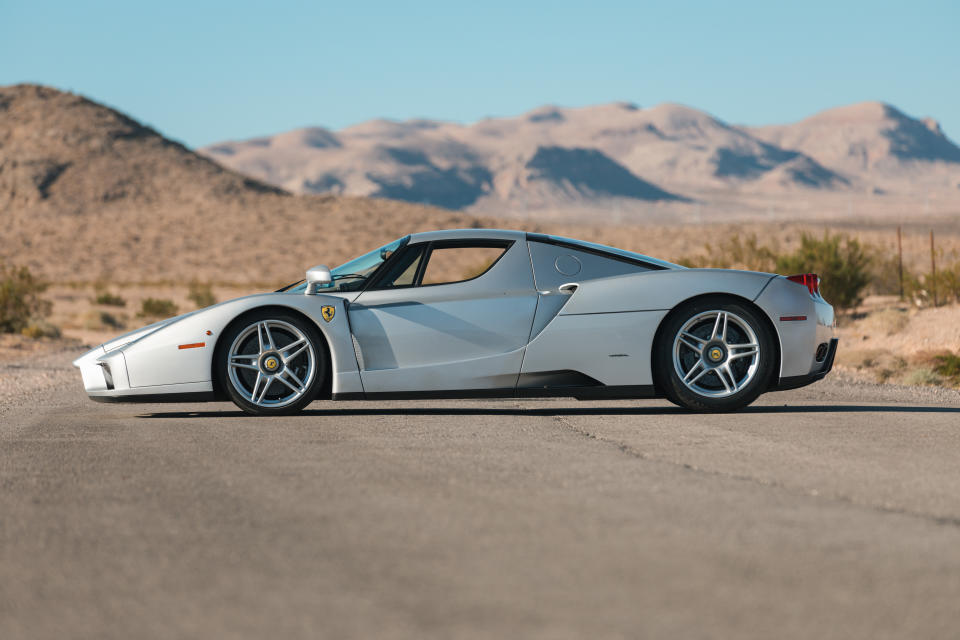
Of course, the Enzo was a hot commodity from the get-go, long before hybrid power trains became the standard for the future of high-performance automobiles. Only 399 examples of the Enzo were produced (plus one for the Vatican) between 2002 and 2004, with about 70 destined for the US market. The entire model run was presold to valued Ferrari customers, most of whom were already F40 and F50 owners.
Paralleling Ferrari’s ascendency in Formula 1, development of its ultimate road-going sports car began in 1998 at the behest of the marque’s chairman at the time, Luca Cordero di Montezemolo. The car was radical in appearance, with its butterfly doors, Formula 1–inspired nose and rear diffusor that pushed aerodynamic solutions to the fore, though its aerodynamics went well beyond those allowed in Formula 1. The Enzo was penned under the aegis of Pininfarina’s head of design, Ken Okuyama, and made its official debut at the 2002 Paris Motor Show.
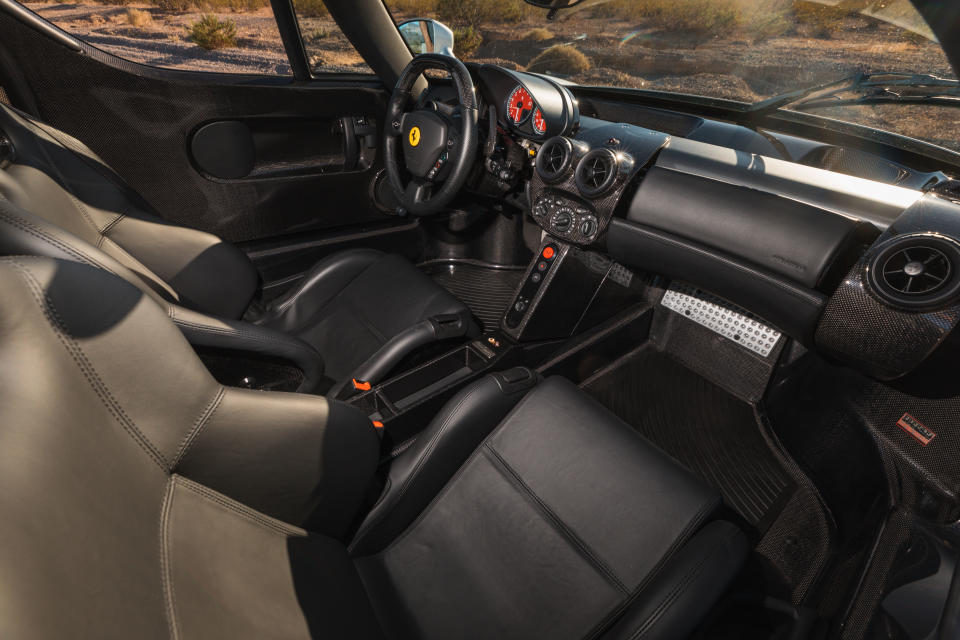
The Enzo expressed Ferrari’s tried-and-true mid-engine layout, and relied heavily on Formula 1 tech that included a carbon-fiber body and a Formula 1–style automated-manual transmission. Its independent suspension was electronically controlled, automatically adjusting ride height for optimum downforce, while its carbon-ceramic disc brakes soon became the standard of the industry.
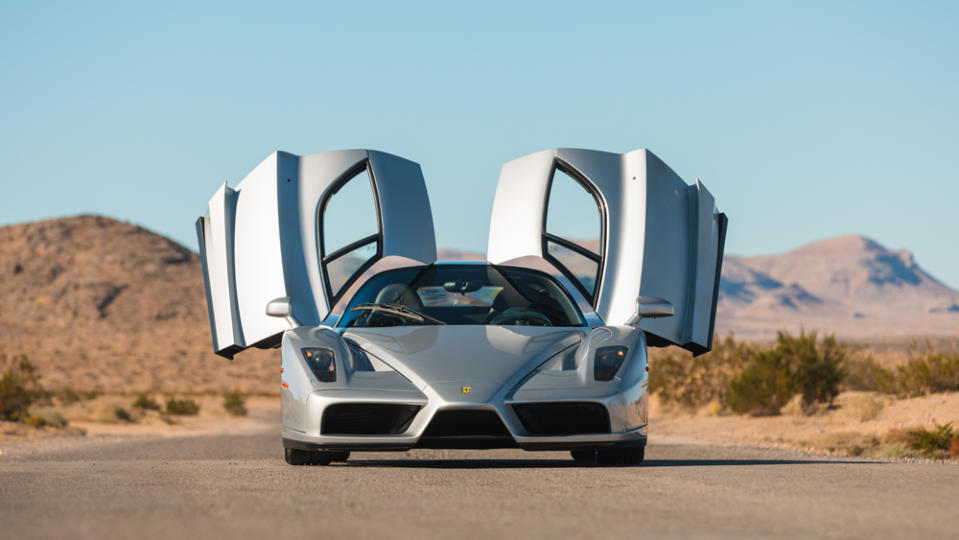
The Enzo’s 6.0-liter V-12 engine was entirely new, based on the design for a V-8 developed for Maserati’s new range of coupes and Quattroportes. The four-cam, four-valve-per-cylinder V-12 uses electronic sequential-port fuel injection, a variable-length induction system, and, as a first, continuously variable exhaust timing. It develops 485 ft lbs of torque and a healthy 660 hp at 7,800 rpm. Given its period MSRP of about $660,000, that pricing and output equates to $1,000 for each horse.
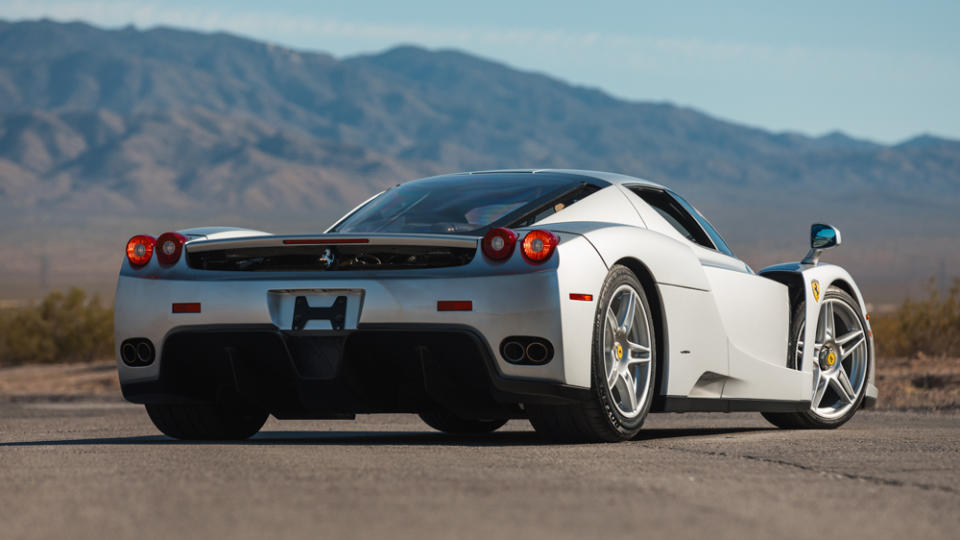
Not your “regular red” Enzo, this 7,334-mile example features a striking, custom-ordered Argento Nürburgring exterior. The purposeful carbon-fiber cockpit is fitted with black leather bucket seats, each with Ferrari’s Cavallino stitched into the headrest. Thus ensconced, the driver gets one of the best views ever, staring into a large, 10,000 rpm tachometer. The Hagerty Price Guide values Enzos at between $2.9 million and $4.1 million today. It’s anyone’s guess, though, what this silver steed will bring.
Click here to see more photos of the 2003 Ferrari Enzo being offered through Mecum Auctions.
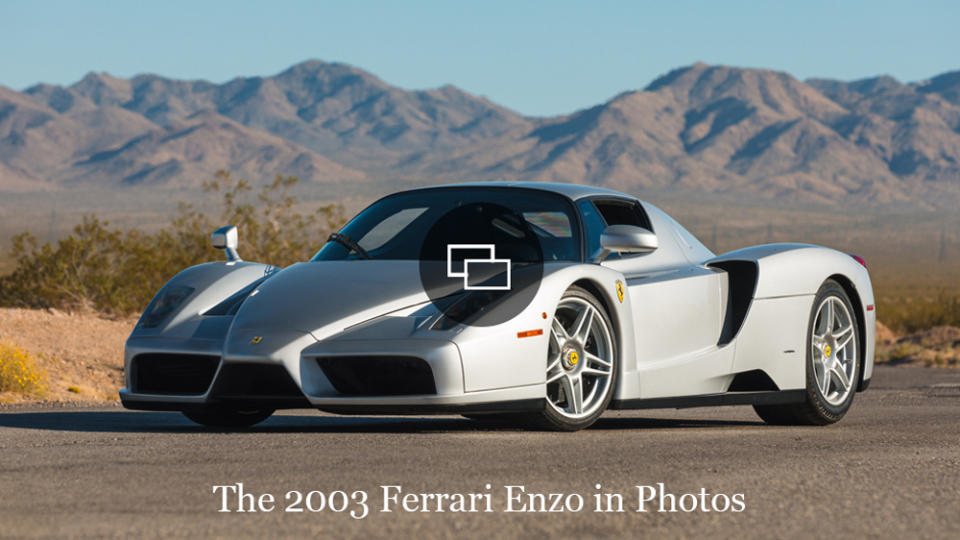
Best of Robb Report
The 15 Best Travel Trailers for Camping and Road-Tripping Adventures
The Chevy C8 Corvette: Everything We Know About the Powerful Mid-Engine Beast
Sign up for Robb Report's Newsletter. For the latest news, follow us on Facebook, Twitter, and Instagram.

